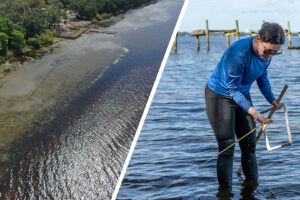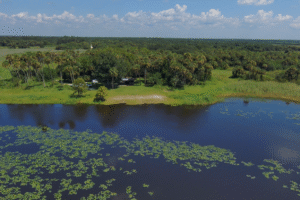Here’s some good news about our red-cockaded woodpeckers
It’s shaping up to be a banner year for red-cockaded woodpeckers at Hal Scott Regional Preserve and Park in Orange County.
“All of our woodpecker families are nesting!” says St. Johns River Water Management District Land Manager Maria Zondervan. “No one appears to be sitting out the nesting season, and that is not normally the case. And we have had our first ever three-chick nest! I’ve been at this for 20 years and this is the first year where we have had three chicks reach banding age.”
The District’s primary goal in purchasing and managing land, such as the Hal Scott Preserve and Park, is to protect water resources. While doing this, the District also actively manages the properties to protect native plants and animals.
The District has worked with the U.S. Fish and Wildlife Service to manage the federally protected and endangered birds for nearly 20 years. Zondervan and other District land managers have relocated some of the woodpeckers to Hal Scott from Apalachicola National Forest in Florida’s panhandle where the birds are more abundant.
“The fact that all pairs are nesting, and we have as many chicks as we do, is a sign of good ecosystem fitness this year,” Zondervan says.
“We conducted a large aerial prescribed burn in February that encompassed the territories of all the northern family groups (roughly half the population) of red-cockaded woodpeckers on Hal Scott. Before anyone worries about these birds, they are well adapted to fire and in fact, it is critical to their survival as it keeps hardwoods from encroaching on their pineland habitat,” Zondervan adds. “The groundcover responded amazingly well to that burn and the place looks phenomenal now. Everything is blooming and there are nice juicy bugs and arboreal ants everywhere for the woodpeckers to eat!”
Learn more about our efforts to manage these endangered birds here.





